
Evening blues and greens, Lake Clark National Park and Preserve / Rebecca Latson
The previous quiz and trivia pieces have centered around specific national parks and protected areas supported by agencies and groups who have contributed to the Traveler and its mission. Those pieces are a “thank you” to those groups for their new or continued support. This Quiz and Trivia #24 is also a thank you to a business called Wild Tribute, “founded to honor our national parks and public lands.” Wild Tribute donates 4% of their proceeds “to protect these historic and wild places.” Welcome to the Traveler neighborhood, Wild Tribute!
So, this quiz and trivia piece ranges through a number of National Park Service units. How much do you think you know about those parks you’ve visited or plan to visit? Test your knowledge with these questions before checking the answers at the end of this piece. You might learn something new!
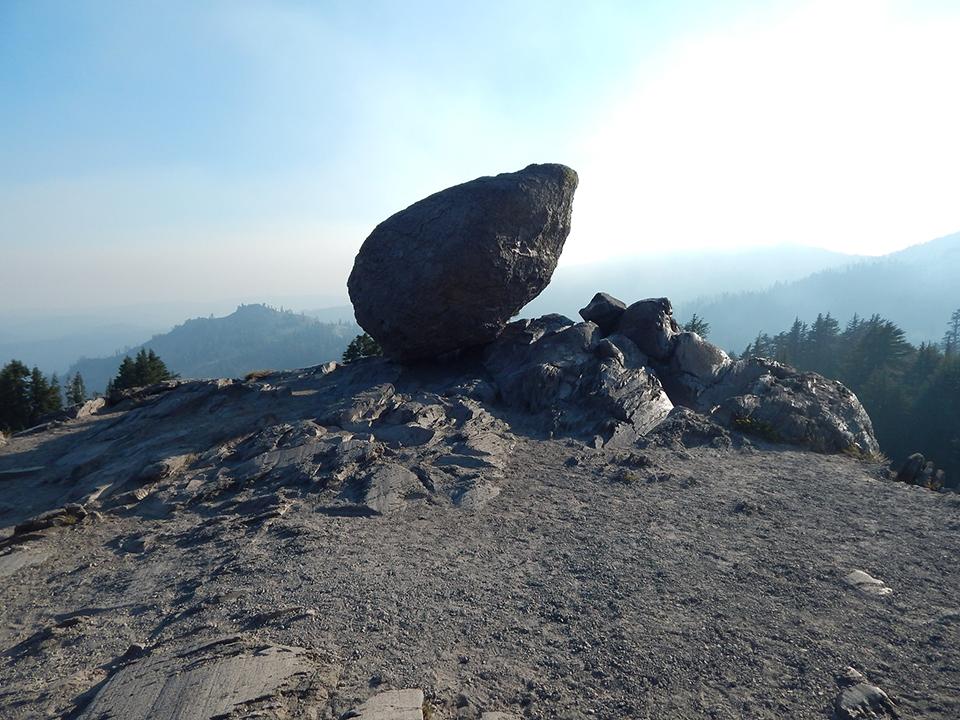
Leftover from a glacier, Lassen Volcanic National Park / Mike Linksvayer
1. Lassen Volcanic National Park is primarily known for its volcanic activity. But glaciation also had a hand in shaping this park. Evidence of this may be seen in the form of cirques, U-shaped valleys, and glacially-transported rocks and boulders such as the one in the photo above, known as:
a) Outwash
b) Drumlins
c) Erratics
d) Till
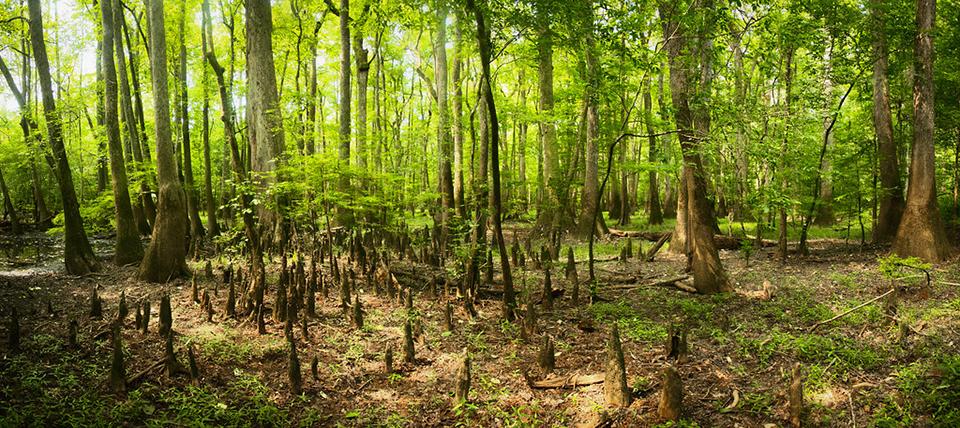
Cypress knees and trees, Congaree National Park / National Park Service
2. True or False: bald cypress trees like the ones in Congaree National Park, are both conifers and deciduous trees.
a) True
b) False
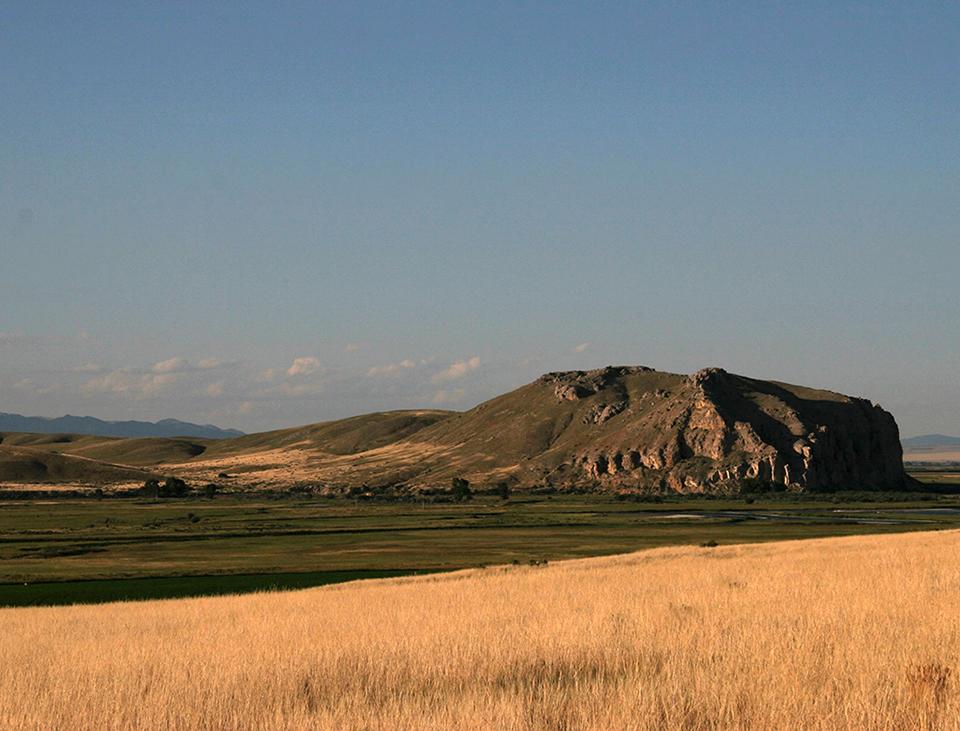
Beaverhead Rock, Lewis and Clark National Historic Trail / National Park Service
3. The Lewis and Clark National Historic Trail is approximately _____ miles long.
a) 2,500
b) 3,200
c) 4,900
d) 5,600
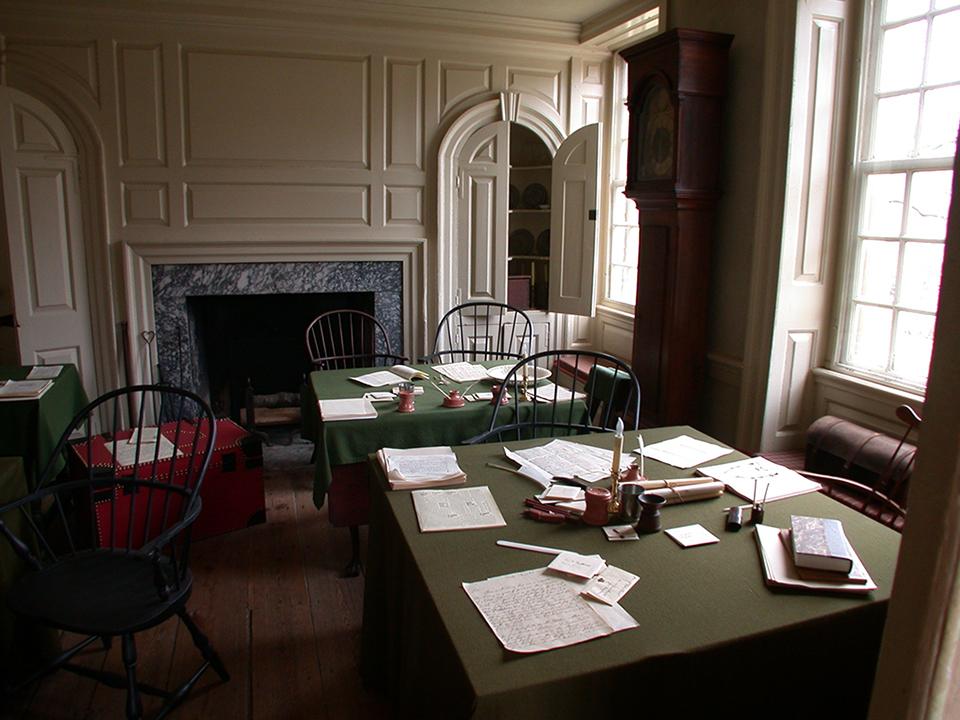
Aides-de-Camp room, Valley Forge National Historical Park / National Park Service
4. True or False: Valley Forge, is the site of the 1779 winter encampment of the Continental Army.
a) True
b) False
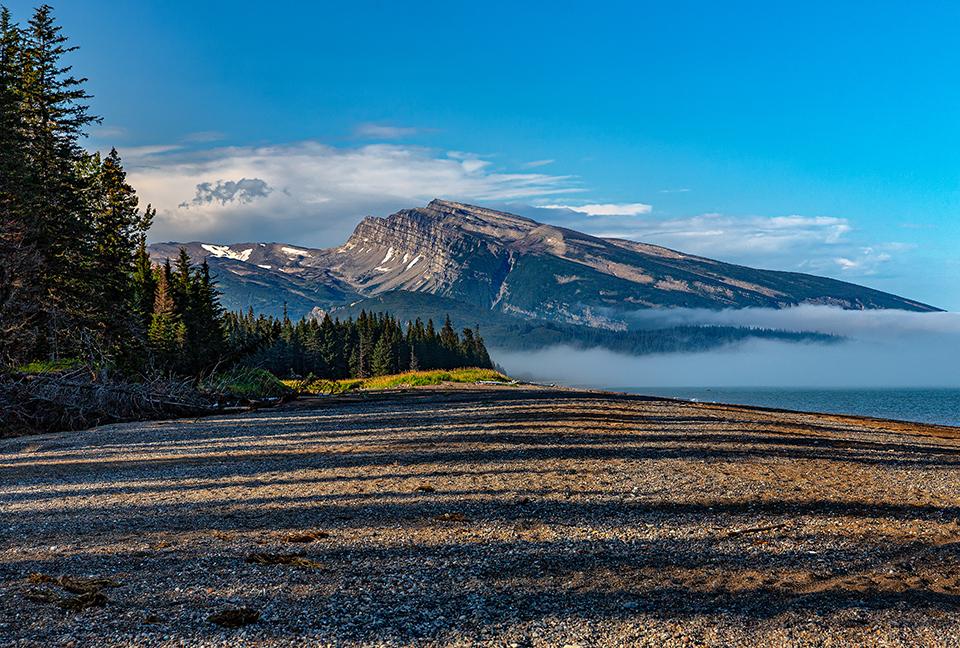
Slope Mountain, Lake Clark National Park and Preserve / Rebecca Latson
5. What two great mountain ranges intersect in Lake Clark National Park and Preserve?
a) The Chugach and the Brooks
b) The Talkeetna and the Kenai
c) The Tordrillo and the Kigluaik
d) The Neacola and the Chigmit
6. Most seeps and springs, which provide water for the great diversity of wildlife in Mojave National Preserve, originate from ______.
a) Perched aquifers
b) Water tables
c) Reservoirs
d) Rainwater cisterns
7. Weir Farm National Historical Park encompasses the home, studio, fields, and waterways of one of America’s most beloved artists. J. Alden Weir was famous for his_______.
a) Pointillist art
b) Art Deco furniture creations
c) Impressionist art
d) Dadist art
8. This question is taken from information directly off of the Thomas Edison National Historical Park’s Instagram account @thomasedisonnhp:
It’s possible this substance was used at Thomas Edison’s laboratories “as a marble cleaner, to absorb gasoline and oil spills, and as an ingredient in Portland cement.” What is this substance’s name? Hint: “it’s name comes from its use to remove oil and dirt from wool.”
a) Kaolin
b) Fuller’s earth
c) Bentonite
d) Ball Clay
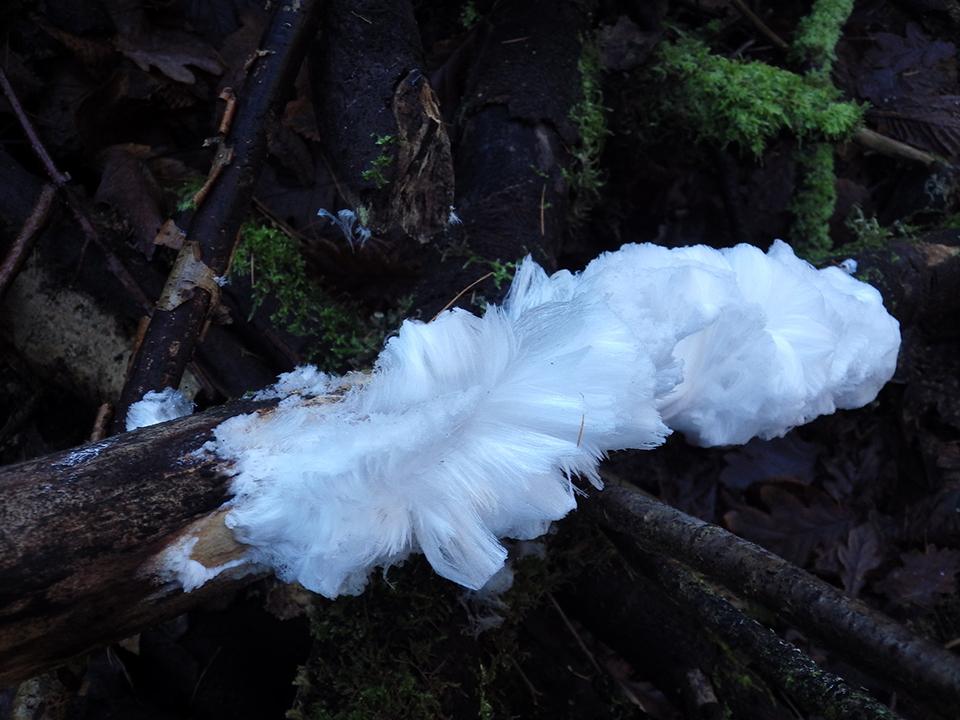
Hair ice / Puffin11k
9. Here’s information taken from North Cascades Institute’s Instagram account @ncascades: While hiking out in the cold winter wilds of North Cascades National Park, you might see curling crystals around a stick or twig. It’s been called many things, from frost flower to needle ice to hair ice. True or False: Hair Ice is not a frost.
a) True
b) False
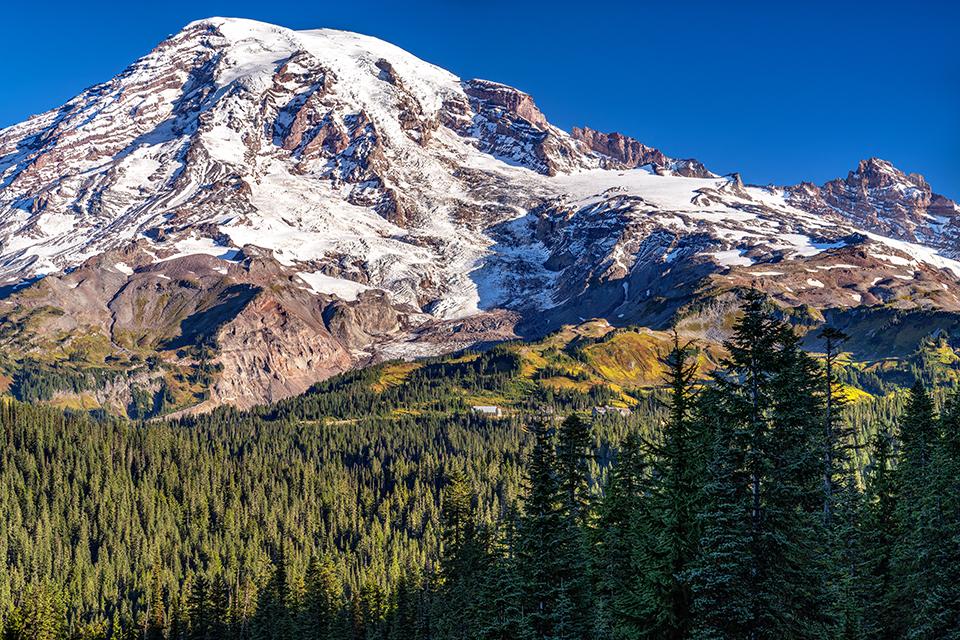
A telephoto view of the Paradise area from Pinnacle Peak Trail, Mount Rainier National Park / Rebecca Latson
10. True or False: Mount Rainier National Park is home to the tallest mountain in the lower 48.
a) True
b) False
Trivia
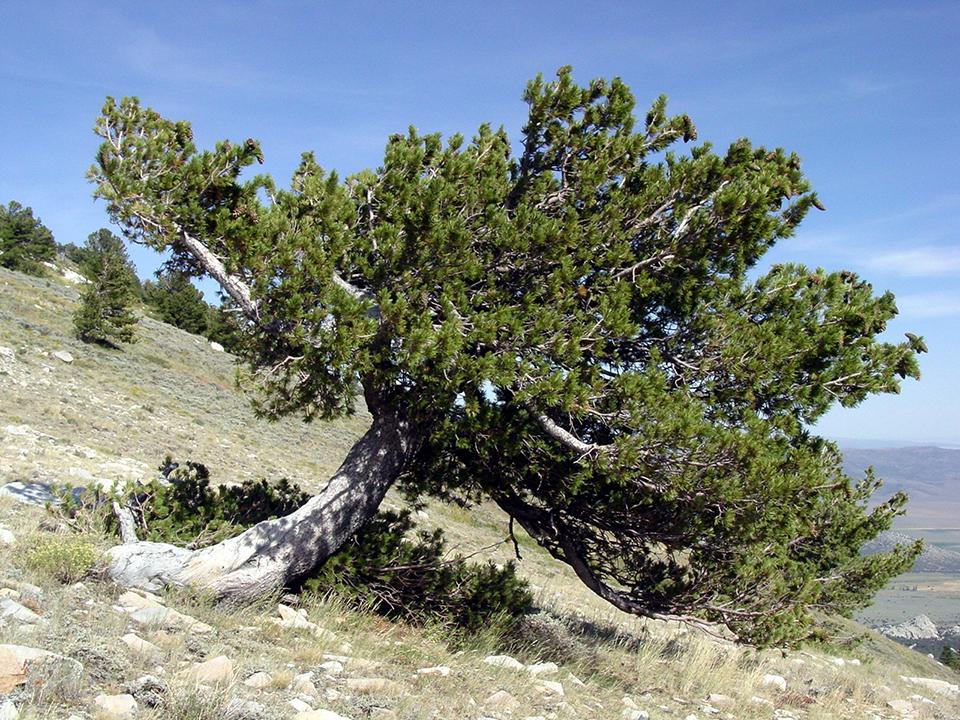
A limber pine tree, City of Rocks National Reserve / National Park Service
One of the trees you’ll see living in City of Rocks National Reserve is the limber pine. Limber pines tend to be small trees between 15-30 feet tall. They can have multiple trunks and are often seen gripping rocky outcrops. Limber pines can survive in windier locations at high elevations where the high winds twist these trees into odd, gnarly shapes. The limber pine gets its name from the flexible branches that can survive the high winds.
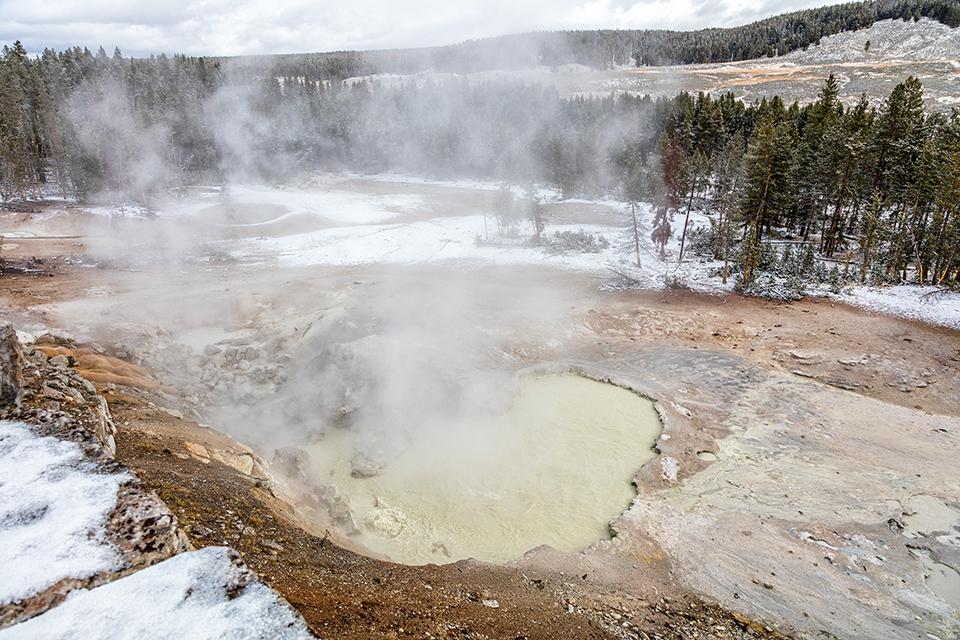
Sulphur Caldron, Yellowstone National Park / Rebecca Latson
The Mud Volcano area in Yellowstone National Park is one of those places with hot springs containing a large concentration of acid and sulfur. Sulphur Caldron, across the road from the Mud Volcano parking area, is so acidic that it prevents the growth of bacteria and algae seen elsewhere in the park. You’d think that nothing can live in that environment, yet life manages to find a way to thrive, even there. A microbe called Sufolobus acidocaldarius feeds upon the sulfer compounds, oxidizing the sulfur and turning it into sulfuric acid!
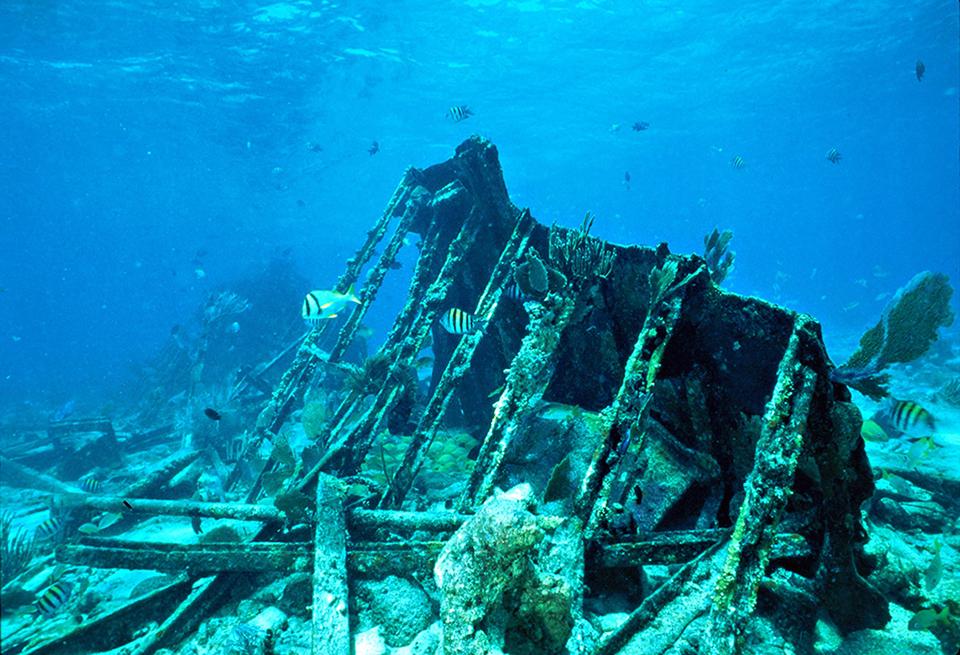
The skeletal structure of the Mandalay wreck, Biscayne National Park / National Park Service
On New Years Day, 1966, the schooner Mandalay ran aground on Long Reef. The wreck now lies in the eastern part of Biscayne National Park and is one of the best shallow dive spots in the park.
Mandalay was beautifully outfitted in mahogany, brass, and ivory, and had a teak deck. Aft quarters were a suite of 2 rooms with an adjoining bath for the owner, 3 single staterooms, each with a bath, and a large guest room with an individual bath. Forward of the main mast were a large saloon and living room, 3 officer’s staterooms with a bath, and ample forecastle for 6 men with a washroom and shower. All bathrooms had hot and cold water and all waste connected to a complete sanitary system. There were electrical lights and fans and other electrical equipment, and every stateroom had individual ventilation.
Quiz Answers
1c
Erratics are glacially-deposited rocks varying from pebbles to boulders, often differing from the rock composition of the landscape on which they were deposited. Sometimes, erratics might be carried hundreds of miles from their original location. To learn more about Lassen Volcanic National Park’s geology, click here.
2a True
Bald cypress trees are deciduous conifers. Their needles change color in the autumn then fall to the forest floor. The “bald” part of their name comes from the fact they drop their needles so early in the season. Bald cypress can live for hundreds of years and can grow to heights of 120 feet. To learn more about the bald cypress tree, click here.
3c
The Lewis and Clark National Historic Trail is approximately 4,900 miles long, “extending from Pittsburgh, Pennsylvania, to the mouth of the Columbia River, near present day Astoria, Oregon. It follows the historic outbound and inbound routes of the Lewis and Clark Expedition as well as the preparatory section from Pittsburgh, Pennsylvania to Wood River, Illinois.” To read FAQs about this historic trail, click here.
4b False
Valley Forge is the site of the 1777-78 winter encampment of the Continental Army. Valley Forge National Historical Park “includes 3,500 acres of monuments, meadows, and woodlands that commemorate the sacrifices and perseverance of the Revolutionary War generation, and honors the ability of citizens to pull together in order to overcome adversity during extraordinary times.” To read more about the history and culture encompassed within this national historical park, click here.
5d
The Neacola Mountains and the Chigmit Mountains intersect in Lake Clark National Park and Preserve. To read more about these mountain ranges, click here.
6a
While not exactly a trick question, some of you might consider a reservoir the same thing as an aquifer, since both hold water. Reservoirs are large, open bodies of water and aquifers are stores of water within permeable rock. “Most springs and seeps in Mojave National Preserve are located along the southwest–northeast trending spine of mountains that includes the Granite, Providence, New York, and Castle mountains. They discharge from aptly named perched aquifers, which occur above the regional water table often on a valley wall or hillside, and are primarily ‘filled’ or recharged by rain and snow melt.” To learn more about the seeps and springs of this national preserve, click here.
7c
“Weir’s farm is a national legacy to American Impressionism,” celebrating “America's most beloved Impressionist, J. Alden Weir.” To learn more about Julian Alden Weir, click here.
8b
“Fuller’s earth is a clay-like substance found in several global areas.” In addition to cleaning marble, absorbing gasoline and oil spills, and removing oil and dirt from wool, Fuller’s earth “was often used for special effects in films,” to “simulate the effects of an explosion or dust storm, and was even used to create the twister in ‘The Wizard of Oz.’” Oh, and the term “fuller” comes from the name given to the woolen refinery worker who would use this substance to sour the wool.
9a True
“While it’s commonly called a ‘frost,’ that’s not technically correct. Ice crystals are formed at below-freezing temperatures, but they are later ‘sculpted’ into fine strands of hair by a resident fungus known as Exidiopsis effusa. Exactly how it manages to do this is still a mystery, but scientists think it might have to do with a ‘recrystallization inhibitor’ provided by the fungus.”
10b False
Actually, Sequoia National Park is home to the tallest mountain in the lower 48: 14,494-foot-tall Mount Whitney, on the eastern border of Sequoia National Park and Inyo Forest. Mount Rainier has an elevation of 14,410 (according to the NPS site for this national park).
References
In addition to any information from the NPS.gov sites for the national parks named in the quiz, the following references were also used:
https://irma.nps.gov/DataStore/DownloadFile/489001
Emily Hoff & Maygen Keller, Scenic Science of The National Parks, 2020, Ten Speed Press
Janet Chapple, Yellowstone Treasures, The Traveler’s Companion to The National Park, 2020, Granite Peak Publications



Comments
Another fun, fact filled quiz. Thanks - I think (I only got 3 right)! 8-(
Thanks, Chip. I'm always learning something new as I work on these pieces. Makes me realize just how much I really *don't* know about our national parks and protected areas.
Great quiz. I had fun doing it. Is it possible to put out an easier quiz at some point for the kiddies? We went to a lot of national parks this year but they would never get most of these questions.